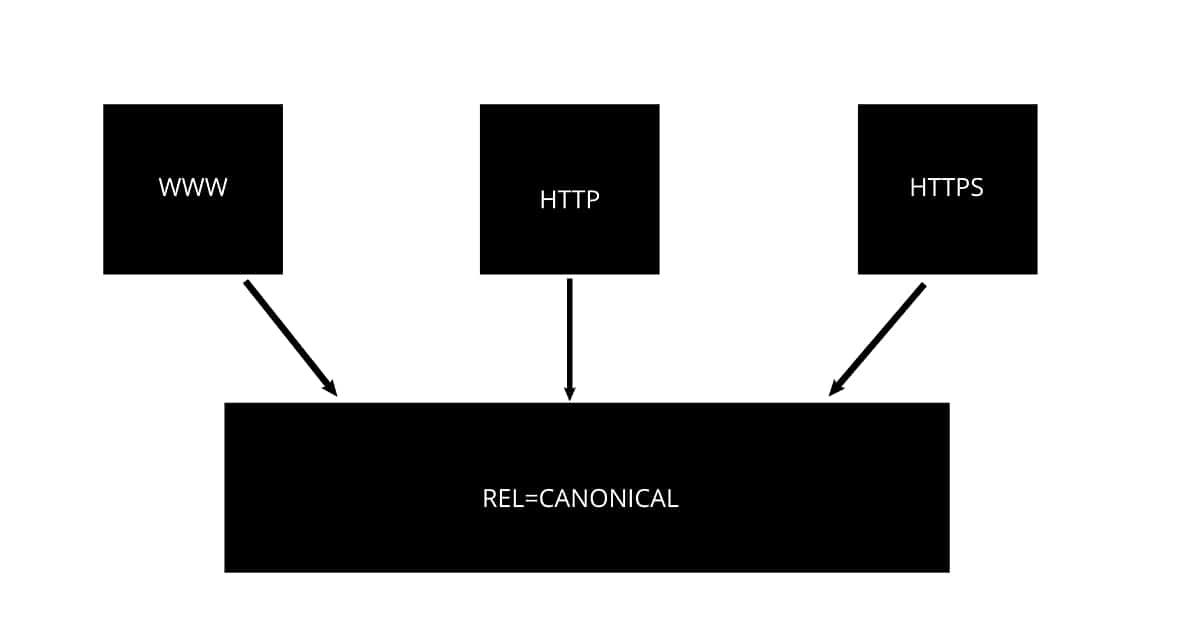— Blog
SEO GLOSSARY
SEO Glossary is where you will find all the terms related to seo and their explanation along with few screenshots

SEO Glossary
Like other specialized industries, search engine optimization or SEO has its terms, industry jargon, and abbreviations. Here’s a comprehensive list of SEO terms to help you sound knowledgeable.
Above the Fold
This term describes anything users see when they land on a web page without scrolling. It could be texts, images, etc. This content is important because it offers the first impression of your site to visitors.

Absolute URL
This term denotes a link that shows the absolute path to an HTML page, a file, or anything you might want to link internally within your website. It’s a component of the anchor tag and comprises a domain name and protocol.
Algorithm Update
The term implies alterations or modifications made to Google’s search algorithms that determine website ranks from natural search results. Major updates over the past few years include Penguin, Panda, and Hummingbird.
Alt Text
This term describes the written copy that emerges on a webpage in lieu of an image if the image doesn’t load on the user’s screen.

Anchor Text
These are noticeable, clickable texts in a hyperlink. They’re frequently blue and underlined in contemporary browsers.

Source – Buzzfeed
Backlinks
These links send viewers from different websites to yours. They’re valuable because of their capacity to pass authority from one site to another. These links function as ‘confidence votes’ between websites.

Black Hat
These practices increase a page or site’s rank in search engines through techniques that breach service terms. Search engines can ban your website if you use these techniques.
Blog
An informational website that contains write-ups or “posts” on a wide-ranging topic-base. It’s a platform for writers to share their opinions and engage their audience.

Bounce rate
It’s the percentage of website visitors who leave too quickly after they land on a website. It gauges interaction with your website.
Breadcrumbs
These navigational elements produce a better user experience and enhance crawlability on a website. The website links enable users to track their position on a website.
Broken Link
The term is used to describe hyperlink destinations that cease to exist. When users click on them, they will typically see a message informing them that the webpage doesn’t exist.
Cache
Technology that stores website content temporarily to enhance a web page’s loading time.
Canonical URL
The URL allows you to inform search engines that some URLs are similar. This helps webmasters avoid duplicate content.
Click-through rate
CTR is a metric. It calculates how many users click on a link when they see it emerge in Google search outcomes. Higher rates imply more visits or clicks. The higher your ranking on Google, the higher the clickthrough rate.
Content
A term used to describe any information on the web that’s developed to attract search engine traffic.
Conversion Rate
A conversion rate is obtained by multiplying the ratio of defined actions to actual website visitors by 100. It’s always shown in percentage form. It monitors a web page’s conversion depending on what aspects you wish to monitor.
Crawl Error
Search engines crawl through web pages indexing content. When they cannot reach a page on a site, it is recorded as a crawl error.
Deep Linking
This method uses internal links within a website’s content. It’s a link from a page on a website to a separate page on a similar website. It applies within blog posts or in CTAs or calls to action.
Source – Buzzfeed
De-indexing
The process involves eliminating a web page or pages from Google’s index, making it invisible in the search engine result page (SERPs).
DNS
The abbreviation stands for Domain Name System. Consider it a directory in a language understood by computers. Its main purpose is to change domain names into IP addresses.
Dofollow
Links are mini votes of confidence. Dofollow is an HTML attribute that enables search bots to follow links. Google notes these links and determines the number of users linking to your page to understand the page’s quality.
Source – Buzzfeed
Domain
These are distinct, readable website internet addresses in a language understood by humans. It comprises three components—a domain name, top-level domain, and optional subdomain.
Duplicate Content
Content that is accessible across numerous web URLs is considered duplicate. When different URLs have similar content, search engines issue a lower ranking for both.
eCommerce
This is a business model that allows individuals and firms to sell and purchase products online. It can also describe any form of commercial transaction that occurs through the internet.
Editorial Link
The link arises from a site with good marketing strategies and good content. You don’t pay for it or request it directly like acquired links.
Ego-Bait
It’s a link-building strategy where you use a link to a person or company within your content and then reach out to them, hoping that they’ll respond with a backlink.
Domain Authority
It is a search engine score that measures the success of a website when it comes to search engine outcomes (SERPs). It offers an overview of probable search engine performance.
Featured Snippets
A highlighted text excerpt emerges at the top of search results on Google and other search engines. These feature content that is obtained from a different web page.
Follow
The link counts as points and boosts the page rank of the website linked to it, helping it rank higher in the SERP.
Footer Link
These are site-wide links, also known as boilerplate links. They emerge on almost every website’s page.
Google Ads
It’s an advertising service created by Google where users engage in keyword bidding for their ads to emerge in Google and associated advertising networks.
Google Analytics
It is a free analytics tool from Google that enables you to monitor your site’s performance.
Google Bot
A term used for a robot or spider that crawls the web, collecting data from websites.
Google Search Console
The free tool allows SEO experts, website owners, and developers to understand their website’s performance on Google while making a website discoverable.
Google Tag Manager
The tag management system enables you to revise measurement codes and associated code fragments easily and quickly.
Google Trends
The online tool helps users discover and visualize trends in search behavior in Google Images, Google Search, and YouTube. It’s instrumental when assessing SEO strategy in a company.
Grey Hat
The term describes content written purposely to increase a page’s ranking. It comprises sufficient keywords to attract visitors to a webpage but doesn’t add a lot of value.
Guest Blogging
This content marketing and SEO technique involves somebody writing and publishing a post on a blog or third party website to endorse their corporate or personal brand.
Header Tags
These tags separate subheadings and headings on a webpage. They range from H1-H6, with H1 being the title. They work to enhance the SEO and readability of a webpage.
Homepage
A website’s main page that loads when a user types in a web address that comprises the domain name. It’s a website’s starting point and functions as a guide.
HTML Sitemap
It is a list of the links to all the pages included in a website. An HTML Sitemap helps users with navigation to various parts of a website.
HTTP
Hypertext Transfer Protocol or HTTP is an application-layer protocol that transmits hypermedia documents, for instance, HTML. It communicates between web servers and web browsers.
HTTPS
It is an extension of HTTP. Its purpose is to secure communication over a computer’s network and functions extensively on the internet.
Image Filename
This term refers to the text preceding an image extension like jpg, png, etc. It helps identify a file system’s image.
Index
Much like a book index, this term is used to describe information organized by search engine crawlers based on predefined parameters.
IP Address
The unique address recognizes a device on a local network or the internet.
JavaScript Rendering
This option allows search engines to understand web content that’s produced through javascript. The content could differ from basic styling changes to deeper incorporations that adjust the webpage structure with particular data.
Keyword
These are words or phrases typed into a search box to locate a website with corresponding content. Also called search queries, these phrases and words direct users to your products, brand, and services.
Keyword Research
The research that is done to identify the words or phrases most used by your prospective clients or website visitors. These are added to website content to help prospects to find your services, products, or expertise.
KPI
Key Performance Indicator measures how well your marketing strategy meets your general campaign objectives.
Landing Page
The website page a visitor lands on after performing a search is called a landing page. This page functions as the first page people view. This page will also support other functions like pay-per-click ads or include a CTA.
Lead Magnet
The term denotes content that encourages leads or prospective customers to leave their email or contact information. Free ebooks or videos to be received upon sharing an email address, for instance.
Link Text
The term refers to the text related to a link target. It can be a character, word, or numerous words. The clickable link phrase or text related to a URL is a hyperlink.
Link Building
The process involves getting other websites to link to your site. It helps enhance a website’s authority while driving referral traffic.
Link Juice
The term describes the equity or value passed from one site or page to another through hyperlinks.
Long Tail Keyword
The term is used to describe a key phrase that is more specific and typically longer than a keyword. Although they obtain less search traffic, their conversion value is higher.
LSI
Latent Semantic Indexing (LSI) describes conceptually associated terms that search engines use to understand web page content.
Machine Learning
ML is a technology that permits computer systems to conduct particular tasks without adopting explicit instructions. This subset of artificial intelligence is increasingly becoming important in digital advertising.
Meta Description
This is the description provided by a page or website author for a specific page. A search engine often displays it in the search outcome snippet. Google will overlook your description if it’s extremely long.
Meta Tag
This is a text snippet that describes a page’s content. They don’t emerge on the page but in the source code. Meta tags help inform search engines what a page is about.
Metrics
The measurement unit tracks a website’s performance. The most important SEO metrics are bounce rate, organic traffic, backlink count, etc.
Negative SEO
The term describes the use of black hat SEO techniques to lower a competitor’s rank. They include website hacking to alter the content and other off-page strategies such as developing duplicate content.
Nofollow
The opposite of a dofollow, this link doesn’t boost page rank or help its position in SERPs. Instead, it informs the search engine to ignore the link.
Offpage Optimization
It describes all measures that can occur outside the website to enhance its position in search rankings.
Off-Page SEO
This describes all actions that enhance your site’s standing in the SERPs that don’t occur on the website. It includes marketing and link building for exposure purposes in the form of social media marketing or guest posting.
On-Page SEO
The term denotes the optimization of all individual website pages. It involves optimizing HTML source code and content to enhance search engine ratings and visibility.
Outbound Link
This type of link will direct you to another website or specific webpage.
Page Cloaking
It describes a black hat SEO method where a search engine is presented with a content version that differs from what a visitor sees. This occurs by delivering content that depends on the user’s IP address.
Page Rank
This is a system that ranks pages and enables web page evaluation using an algorithm.
Page Speed
It describes the duration it takes for web pages to load. Page speed can vary depending on your site content, including image files and server capabilities. A slow-loading page will be a barrier to higher rankings.
Page Title
The clickable headline that emerges in the SERPs for a particular website page. It’s the most visible component of the SERP snippet and has a considerable influence on your SEO.
Panda
The search filter prevents websites with poor quality content from attaining high ranks in Google’s search results.
Pay Per Click
This is a mode of advertising that involves a fee payment whenever users click on an ad. It provides a means of purchasing visits to your website instead of trying to earn visits organically.
Protocol
A protocol is standard rules that dictate how electronic gadgets communicate with each other. It also determines how a browser should obtain data regarding a resource.
Query
A phrase or series of words you enter into a search bar.
Ranking Factor
It describes the criteria search engines apply when assessing web pages. This criterion helps search engines to compile the ratings of their search outcomes. They can relate to user signals, the website’s content, or other relevant features.
Redirect
It’s a way of sending search engines, and users to a different URL from the one requested originally. The common redirects are 301, Meta Refresh, and 302.
Rendering
The process involves assessing ordinary client-side rendered user content and server-side rendered search engine content by a Googlebot to understand a web page’s structure.
Responsive Design
The design approach makes it easier for visitors to navigate and read your website easily. The outcome is an enhanced user experience and considerable time spent on your website. Having a responsive design means you will not require separate gadget-friendly versions of your site.
Rich Snippet
The snippets of information typically available in boxes at the top of Google’s SERPs are called rich results or rich snippets. They function as enhanced outcomes and have additional interactive or visual features.
Schema
Schema is similar to rich snippets in that it is additional information that helps search engines understand the content on your website. It enables the search engine to determine whether your website is relevant to a query.
Search Engine
A search engine is a website that examines all files on the world wide web, grouping them by keyword and before database storage takes place. Popular search engines include Google and Yahoo.
Search Engine Marketing
It is the practice of business marketing through paid advertisements that emerge on SERPs. It seeks to enhance search visibility.
Search Engine Optimization
The type of marketing centered on enhancing rank and visibility in the organic SERPs and obtaining organic traffic.
Search Engine Result Page
A search engine displays these pages in reaction to users conducting search queries. The display can take place with a title headline and brief description or as Google’s SERP element.
Search Traffic
The term describes visitors who arrive at a site by clicking search outcomes leading to that specific website. High traffic implies that the content can obtain a high rank.
Sitelinks
These additional links emerge underneath the main URL for a publisher or brand when you search on Google. They link deeply to other website pages and allow user navigation to your website.
Sitemaps
It informs Google about the pages you consider significant on your website and offers valuable information regarding these files.
Split Testing
It permits marketers to contrast two versions of a page to establish the one that performs better to boost conversions.
SSL Certificate
A Secure Sockets Layer (SSL Certificate) permits websites to shift from HTTP to HTTPS. It displays important information for verifying a website’s owner and encrypting web traffic.
Technical SEO
This part of SEO makes it possible for a search engine bot to index and crawl your website, and in doing so, it enhances its rendering stage. Technical SEO is vital if you want optimal website performance.
Thin Content
This content provides minimal to no value to users. It can range from duplicate content to low-quality pages. Common strategies to prevent your content from being flagged as thin would be to remove it or update it with meaningful content.
Thumbnails
They’re downsized versions of bigger images that search engines use to display various pictures on one page with minimal loading time.
Traffic
The term describes website visitors and originates from search engines.
URL
A Uniform Resource Locator (URL) integrates the domain name with other comprehensive information to develop a complete address.
User Engagement
The metric describes how good a site is at maintaining a visitor’s attention. The idea is to be user friendly so that users stay on a website for longer periods.
User Experience
The term describes the experience the users have while interacting with products.
Vertical Search Engine
These search engines comprise specialized functions and concentrate on a particular section of online content.
Video Optimization
It describes the process of enhancing a video’s search visibility, typically on YouTube. It comprises two segments, namely, process-channel optimization and video optimization.
Voice Search
It is a feature that allows users to implement a voice command to search a website, the internet, or an app.
Webpage
It describes a simple document that a browser displays. The documents appear in HTML language and can embed various resources.
Website
It describes a group of multimedia content and web pages all sharing a similar domain.
White Hat SEO
The SEO practices that follow search engine policies and rules concerning maintaining or increasing a website’s ranking.
Word Count
It denotes the number of words in a passage or document.
XML Sitemap
Just like the HTML Sitemap helps users navigate a website, the XML Sitemap assists search engines to learn more about the website.
Yoast SEO
The WordPress SEO plugin allows users to examine content readability.
Zero-Click
In short, it is a search query that doesn’t require any clicks—when a query is answered on the SERP and doesn’t need users to click on a link/website.




